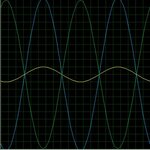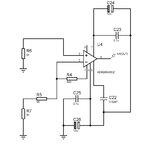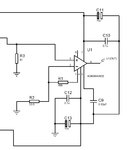Paul98
Member level 5
Hello,i have a question, is a 2n5398 or a 2n4416 better to amplify a microvolt signal? I could use one as the first stage and the other for the second (cascaded).
2n5398
2n4416
I first use fet like this because they already exist of the Proteus database. Otherwise I have difficulties with the mmic because I can not load the model (spice I think).
It would be ok also a MMIC but i have trouble to find simulation data for my EDA software thus a i can't try on it. Thanks.
2n5398
2n4416
I first use fet like this because they already exist of the Proteus database. Otherwise I have difficulties with the mmic because I can not load the model (spice I think).
It would be ok also a MMIC but i have trouble to find simulation data for my EDA software thus a i can't try on it. Thanks.


